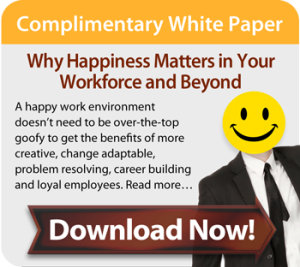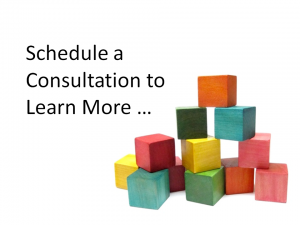That wonderful mix of beliefs, traditions, values, attitudes, and behaviors that distinguish the workplace.
It’s a term that floats around when companies get new hires on board. But it can get very conceptual. At its core, office culture is simply the characteristics and behaviors in a workplace that give your organization a unique vibe.
Employers, Directors, Business Owners and Senior Executives create these environments for their employees. Sometimes office culture mutates on its own when people in leadership interject their personal behavior in unproductive ways. Hence the emergence of the toxic office culture.
Although some authorities say that office culture doesn’t evolve on its own, at TIGERS Success Series we know differently. Our tools have unwound too many toxic office cultures caused by poor behavior to ignore the obvious. This is because constructive and high performing office cultures play a pivotal role in work satisfaction, feedback, and relationships among team members and between departments.
In our book, TIGERS Among Us – Winning Business Team Cultures and Why They Thrive we explain that frequently work culture is unspoken or disappears and becomes split when behavior isn’t addressed and expected of everyone. Rules are largely unwritten, and yet these invisible commandments can make or break organizations.
What kind of influence does office culture have in the workplace and why is it so important?
 Lots. Work culture dictates how pleasant or how noxious the work environment is. It’s indicative of a company’s ability to attract and retain talented employees. More often than not, an applicant’s ability to fit into the company culture is more telling than possessed skill-sets.
Lots. Work culture dictates how pleasant or how noxious the work environment is. It’s indicative of a company’s ability to attract and retain talented employees. More often than not, an applicant’s ability to fit into the company culture is more telling than possessed skill-sets.
When the workplace culture is good, it engages employees. Paychecks and perks are not the biggest driving factors for good behavior. High functioning work culture invites the best employees stay for life.
Team members who stay get the memo. They know that working hard and building good team interactions and communication is professionally recognized and personally rewarding. The best part? It increases productivity because it promotes openness and satisfaction.
But just how do you do that without an office?
With no end in sight for the pandemic just yet, remote work is no longer just a temporary arrangement. Despite measures, many organizations are taking the safe route, opting for skeleton workforces and work-from-home practices.
This means that the simple joys of sharing a box of donuts in the mess room, power conversations at the drinking fountain, the Thursday huddle at the after work hours corner watering hole, or just the synergy of seeing each other daily doesn’t harness the same magic.
If its any consolation, remote worker isolation is a real concern for many organizations the world over. Managers, who themselves feel isolated, are anxious in keeping their team members engaged. But then how do you prevent feelings of isolation without an office culture?
More relevant is, how do you even keep an office culture WITHOUT an office?
First off…
The company dog, the fancy coffee machine, or even the weekly huddles do not a culture make. Sure, we’d like to equate perks with culture but these are merely expressions or channels of culture.
An organization’s culture is based on mission, vision, values and behavior norms. And yes, the best way to build unity is via soft skills like communication, and fostering the principles of trust, interdependence, genuineness, empathy, risk resolution and success in observable workforce behavior.
Here’s the biggest SURPRISE… these core work culture behavior principles are not dependent on location.
What matters to office culture is INCLUSIVITY
 During COVID shut down and through your reemergence planning, it is a great time to dig deep into your work culture and ask whether your concept of culture is simply “perks” or the real thing – your office’s true personality. Is your work culture personality mean? Productive? Split or schitzo based on the poor leadership behavior of one or two senior leaders? .Do you know which collaborative behavior principles are suffering? Are behavior expectations known and applicable to everyone? After making this assessment, you can now get into the stream of things by integrating your culture right into your digital operations.
During COVID shut down and through your reemergence planning, it is a great time to dig deep into your work culture and ask whether your concept of culture is simply “perks” or the real thing – your office’s true personality. Is your work culture personality mean? Productive? Split or schitzo based on the poor leadership behavior of one or two senior leaders? .Do you know which collaborative behavior principles are suffering? Are behavior expectations known and applicable to everyone? After making this assessment, you can now get into the stream of things by integrating your culture right into your digital operations.
Your office culture is NOT lost on remote work. In fact, it can become something that you experience daily regardless of location.
Here are just a few examples of what can be done by leaders and coworkers to make your reemergence improvements click:
- Recognize employees or team members via messages and executive shared stories that represent the office culture you want;
- Create a visual representation of your organization’s culture story during onboarding;
- Hold virtual events based on your values;
- Use the company’s buzzwords (words used in your organizational documents) in the decision-making process.
It may sound so abstract at the moment, but the keyword here is INCLUSIVITY. It’s time to change the mindset that culture is office or work-floor based.
It isn’t.
Physical proximity doesn’t dictate integration. Without the office lights, cubicles, and weekly huddles, you can still encourage active participation and connection by instilling those connections digitally.
Care to dig deeper into how to foster a great office culture?
The following resources deepen this conversation.
- TIGERS Leadership FUNdamentals course. Learn how different leaders built the TIGERS 6 Principles into their operations – trust, interdependence, genuineness, empathy risk resolution and success. On Demand and Instructor Lead options.
- TIGERS Among Us – Winning Business Team Cultures and Why They Thrive (Three Creeks, 2010)
- A Positive Work Culture Produces Happiness
- How Poor Leadership Behavior Impacts Work Culture
- How Genuine Leaders Inspire Positive Work Culture
- Successful Onboarding Practices Include Work Culture Understandings
- Click here to schedule a business call to learn more
Copyright TIGERS Success Series, Inc. by Dianne Crampton
About TIGERS® Success Series
TIGERS provides a comprehensive, multi-pronged approach and robust system for improving workforce behavior, work culture, profitability and project management and team leadership success.
 We specialize in building cooperation among employees and collaboration between departments for profitable, agile, and high performance team outcomes. Scaled to grow as your organization and leadership performance improves, our proprietary TIGERS Workforce Behavior Profile, Micro-Training technology and group facilitation methods result in high performance team outcomes and change success. We also license and certify elite internal and external consultants and project managers to use our resources for similar outcomes.
We specialize in building cooperation among employees and collaboration between departments for profitable, agile, and high performance team outcomes. Scaled to grow as your organization and leadership performance improves, our proprietary TIGERS Workforce Behavior Profile, Micro-Training technology and group facilitation methods result in high performance team outcomes and change success. We also license and certify elite internal and external consultants and project managers to use our resources for similar outcomes.
